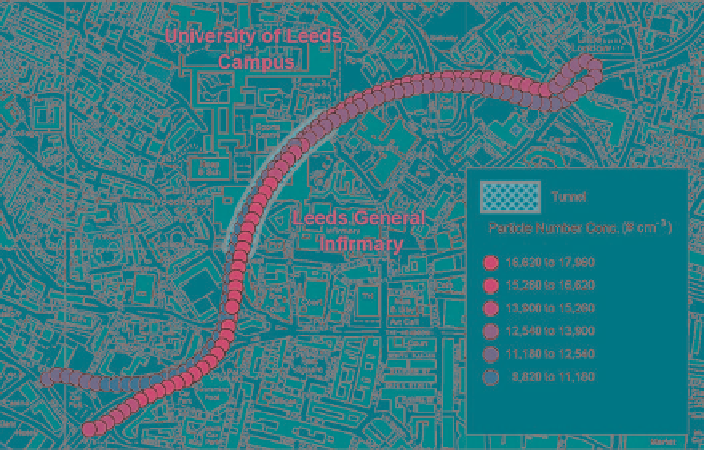Environmental Engineering Reference
In-Depth Information
Fig. 6
Internal inter-peak PNCs
In the case of the West bore, internal concentrations peaked when the vehicle was
about to exit the tunnel indicating a spatial delay of 190 m. In the case of East bore,
the delay is 400-500 m. This could be due to a time lag in external air penetrating
inside the cabin. This delay was prolonged due to the fan in the car set to recircula-
tion mode.
References
1. Chan L, Liu Y (2001) Carbon monoxide levels in popular passenger commuting modes
traversing major commuting routes in Hong Kong. Atmos Environ 35:2637-2646
2. Gouriou F, Morin JP, Weill ME (2004) On-road measurements of particle number concentra-
tions and size distributions in urban and tunnel environments. Atmos Environ 38:2831-2840
3. Weijers E, Khlystov A, Kos G, Erisman J (2004) Variability of particular matter concentrations
along roads and motorways determined by a moving measurement unit. Atmos Environ
28:2993-3002
4. Kristensson A, Johansson C, Westerholm R, Swietlicki E, Gidhagen L, Wideqvist U, Vesley V
(2004) Real-world traffic emission factors of gases and particles measured in a road tunnel in
Stockholm, Sweden. Atmos Environ 38:657-673
5. Pope CA, Dockery DW (2006) Health effects of fine particulate air pollution: lines that connect.
J Air Waste Manage Assoc 56:709-742
6. Donaldson K, Brown D, Clouter A, Duffin R, MacNee W, Renwick L, Tran L, Stone V, (2002)
The pulmonary toxicology of ultrafine particles, J Aerosol Med. 15:213-220
7. Li N, Sioutas C, Cho A, Schmitz D, Misra C, Sempf J, Wang M, Oberley T, Froines J, Nel A
(2003) Ultrafine particulate pollutants induce oxidative stress and mitochondrial damage,
Environ. Health Perspect. 111(4):455-460

